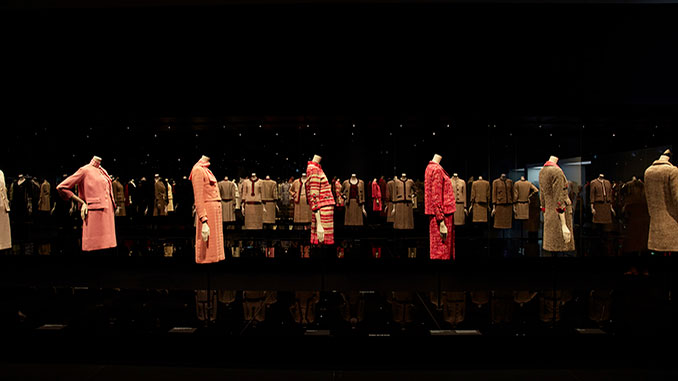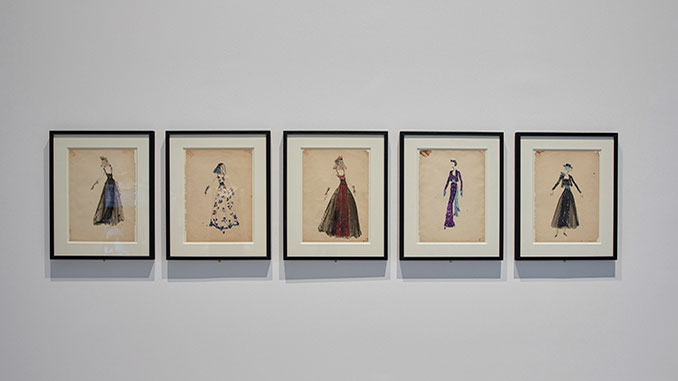 The first exhibition in Australia to exclusively focus on the significant contribution to twentieth-century fashion culture by the renowned French couturière Gabrielle Chanel (1883–1971), National Gallery of Victoria (NGV) presents Gabrielle Chanel. Fashion Manifesto from Saturday 4 December 2021.
The first exhibition in Australia to exclusively focus on the significant contribution to twentieth-century fashion culture by the renowned French couturière Gabrielle Chanel (1883–1971), National Gallery of Victoria (NGV) presents Gabrielle Chanel. Fashion Manifesto from Saturday 4 December 2021.
With more than 230 garments, accessories and jewellery pieces drawn from the rich holdings of the Palais Galliera and the Patrimoine de CHANEL in Paris, complemented by important loans from major public museums and private collections, Gabrielle Chanel. Fashion Manifesto showcases the impressive breadth of Gabrielle Chanel’s output and her design codes.
The Melbourne presentation also features several designs from the NGV Collection, including recent, never-before-seen acquisitions generously gifted by Krystyna Campbell-Pretty AM and Family, including an embroidered organdie Evening dress, spring-summer 1933 and spectacular shirred red silk velvet and marabou-lined Evening cape, c. 1924–26.
“There is no bigger name in twentieth century fashion design than Gabrielle Chanel. Her originality, timelessness and elegance forged a radically modern vision of fashion and a singular style,” said Tony Ellwood AM, Director, NGV. “Gabrielle Chanel. Fashion Manifesto will be expansive, visually sumptuous and will reveal the achievements and enduring legacy of the extraordinary French fashion designer.”
Gabrielle Chanel. Fashion Manifesto premiered in Paris in autumn 2020 and makes its international debut at the NGV in Melbourne, Australia. Gabrielle Chanel. Fashion Manifesto was developed by the Palais Galliera, with outstanding loans from the Direction du Patrimoine de CHANEL, the fashion house’s heritage department, and is curated by Miren Arzalluz and Véronique Belloir, respectively the Director and Head of Collections of the museum.
Throughout the opening weekend, audiences can hear from NGV’s fashion and textile curators and fashion industry experts, including in the three-part talk series, Chanel in Context. Placing the couturière’s designs in their historical, social and cultural contexts, the series explores the language and iconography of Gabrielle Chanel’s designs, the emergence of modernity in the early twentieth century, as well as how Chanel’s early work fits into the complex picture of twentieth century feminism.
Considered to be one of the most influential designers of the twentieth century, Gabrielle Chanel introduced a language of modernity into fashion that still resonates today. With the opening of her first fashion boutique in Deauville in 1912, then her couture house on 31 Rue Cambon in Paris in 1918, Chanel began to reform women’s wardrobes by creating a new code of dress that privileged comfort, function and elegance, and responded to the growing desire for greater social freedoms among women.
Chanel’s designs offered a restrained luxury that rejected ornamentation and, above all else, allowed women to move with ease. She pioneered the use of jersey and tweed, drawing inspiration from menswear and sportswear conventions, and championed the ‘little black dress’ and the suit as liberating modes of dress for women.
Unfolding across several chronological and thematic sections, Gabrielle Chanel. Fashion Manifesto explores Chanel’s design codes through a visually arresting and sumptuous display of more than 100 garments that trace her remarkable career. These are placed alongside her innovations in perfume, jewellery and accessory design.
Highlights include early examples of her use of black to connote modernity and chic; delicate lace gowns; wool jersey and tailored tweed suits; dazzling beaded garments; and bold costume jewellery. The survey offers audiences an unprecedented opportunity to appreciate Chanel’s significant impact on the development of womenswear throughout the twentieth century, and to consider the legacy of her designs in contemporary culture.
 “Melbournians love their fashion so it is fitting that Gabrielle Chanel. Fashion Manifesto makes its first international debut right here in Melbourneafter its premiere in Paris,” said Minister for Creative Industries, Danny Pearson “Exhibitions of this calibre attract visitors from right across the nation, boosting local tourism and adding to Victoria’s standing as the creative state,” said Pearson.
“Melbournians love their fashion so it is fitting that Gabrielle Chanel. Fashion Manifesto makes its first international debut right here in Melbourneafter its premiere in Paris,” said Minister for Creative Industries, Danny Pearson “Exhibitions of this calibre attract visitors from right across the nation, boosting local tourism and adding to Victoria’s standing as the creative state,” said Pearson.
“Gabrielle Chanel devoted her long life to creating, perfecting and promoting a new kind of elegance based on freedom of movement, a natural and casual pose, a subtle elegance that shuns all extravagances, a timeless style for a new kind of woman. That was her fashion manifesto, a legacy that has never gone out of style,” said Miren Arzalluz, Director, Palais Galliera and co-curator of the exhibition.
“Gabrielle Chanel’s success was based not only on the functionality, comfort and chic elegance of her designs, but also on her ability to grasp and interpret the needs and desires of the women of her time,” said Arzalluz.
“By bringing together all the facets of an exceptional creativity, this exhibition throws new light on Gabrielle Chanel’s stylistic legacy,” said Bruno Pavlovsky, President of CHANEL Fashion and of CHANEL SAS.
“A rebel at heart, she transposed her personal needs, audacity and freedom into creations that reflected her personality and that she initially made for herself. Her demands – comfort, functionality, simplicity = subsequently became those of all women.”
“For the first time, fashion reflected the aspirations of women, the changes to come in their lives and the evolution of their place in society. Ephemeral in essence, with Gabrielle Chanel fashion became perennial. By breaking away from the standards of her time, her codes and stylistic vocabulary have endured,” said Pavlovsky.
Highlights of the exhibition include rare examples of Chanel’s early daywear and her wool jersey suits, which marked a radical departure from the elaborate fashions of the Belle Epoque and Edwardian periods in France and England.
Equally captivating are the gowns associated with Chanel’s so-called ‘romantic’ period of the 1930s. Dedicated sections of the exhibition showcase Chanel’s love and use of floral motifs – realised as printed textiles or as appliqued florets – and her skilfully manipulated lace eveningwear.
Chanel’s innovations also included the first composite and abstract perfume, Chanel N°5, created in 1921; cosmetics and highly decorative costume jewellery that combined precious and semi-precious materials.
The exhibition also explores the design codes Chanel introduced in the 1950s, including the quilted 2.55 bag and two-tone slingback that remain closely associated with the visual language of the house.
A further highlight of the exhibition is a display of iconic Chanel suits. Debuted by Chanel in the 1910s and reintroduced after the re-opening of her haute couture house in 1954, the two or three-piece suit, in lightweight woven tweed or wool bouclé, remains a feature of the house’s collections to this day.
Popularised by the likes of First Lady Jacqueline Kennedy, Princesse Grace de Monaco and actresses such as Marlene Dietrich, Romy Schneider and Lauren Bacall, the Chanel suit quickly became the embodiment of sophistication and functionalism, defined by its tailored lines, allowance for ease of movement and comfort, and clever use of gilt buttons and braiding as means of both decoration and structure.
Presented by the NGV in partnership with the Palais Galliera, the preeminent fashion museum of the City of Paris, the exhibition will be launched with an opening weekend of programs and events, as well as an audio guide narrated by house ambassador Tilda Swinton exclusively for the NGV. All opening weekend programs will be broadcast live from the NGV website.
Gabrielle Chanel. Fashion Manifesto
NGV International, 180 St Kilda Road, Melbourne
Exhibition continues to 25 April 2022
Entry fees apply
For more information, visit: www.ngv.vic.gov.au for details. Take a sneak peek at the Exhibition!
Images: Installation view of Gabrielle Chanel. Fashion Manifesto at NGV International, Melbourne – photos by Sean Fennessy
